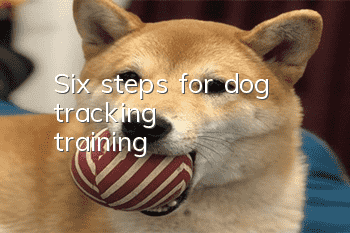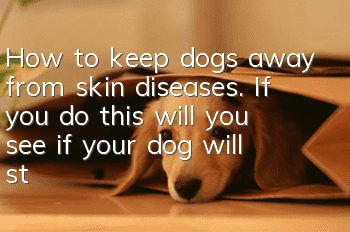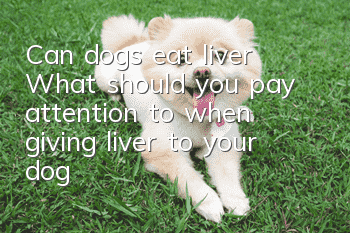Six steps for dog “tracking training”

According to the command of the dog owner and the odor source given to it, look for the same trace as the olfactory source, and follow this trace to obtain items and people with the same odor as the olfactory source. The dog is required to be excited about work, active in sniffing, stable in holding the line, strong in tracking, and obvious in reaction.
Suitable age: 8 months-0 months
Training goal: Cultivate the dog's ability to track targets based on scent traces.
Applicable dog breeds: all dog breeds
Equipment: Tracking strap | Tracking | Items for training tracking
Level: University (Professional)-Professional Skills Training
Training cycle: 30 minutes*20 times
Steps in “tracking training” for dogs:
The first step:The first is to get the dog accustomed to wearing a tracking rope and tracking harness. After that, choose a suitable small piece of grass, hold the leash to let the dog sit down, and another person walks in a straight line about 45 meters away, and puts items that the dog is familiar with on the ground to ensure that it can see what it is doing. After these actions, put the tracking harness and leash on the dog, bend down and point to the starting point with your right hand, and give the commands "sniff" and "track". The dog will rush forward excitedly when he sees the items placed. At this time, after repeated training by the dog trainer, the dog will gradually develop the ability to stand according to gestures or commands and last for a certain period of time. On this basis, the dog will be trained to learn to perform actions such as bowing and turning in circles. Before the training begins, put the tracking harness and tracking rope on the dog, grab the shoulder of the rope. Point your right hand to the starting point, and give the dog the "sniff" and "track" commands. When the dog starts tracking, let the rope come out of your hand. Slide over and follow it when there is about 0.9 meters left. If your dog behaves well, give him gentle encouragement from time to time. Use the day command after your dog has lost interest or is not tracking at all. When the dog finds an object at the end of the tracking, the dog should be rewarded, remove the tracking harness, and throw the object to it to pick up.
The second step: The second step is to enter the second stage of training. When the dog tracks successfully with a delay of 10 minutes, in addition to placing items at the end point, items can also be placed halfway. There should be a certain distance between items. The items in the middle should be placed on the trace line. Do not deviation, and do not place on or near turns. Don’t make items too large or conspicuous. At the same time, it should be fully exposed to the smell of human body. Start with 3 items. As the training progresses, the tracking distance gradually extends, and the number of placed items can be increased. Finding a placed object is beneficial to your dog's tracking abilities because it causes the dog to make full use of its sense of smell. Once the dog discovers the trackingTo find the object, you should let him lie down, drop the tracking rope on the trace, run to the dog's side, and encourage him as usual. After receiving the object from the dog, grab the tracking rope on the dog's shoulder and give the "track" command. When the dog chases forward again, let the rope slide through your hands as mentioned above. As the training level increases, After that, when it finds an object, it will automatically lie down.
Step Three:Then enter the third stage of tracking: when the dog's prolongation of the scent lasts 20 minutes, it is time to arrange training on right-angle traces, and the turns between the traces should be at least 50 steps apart. As mentioned before, items should not be placed on or near turns.
Step 4: In the early stage of training, it is enough to change the trace direction twice. With the deepening of training, the number of turns can be increased to more than two. If the dog encounters difficulties at the turns, he should be allowed to find and discover the traces by himself. Do not rush to help the dog when it is in trouble. This will make It develops the idea of dependence, but if it finds an item one day, it will give it a reward. The tracking time and distance should be continuously extended. If the dog is not ideal for the extended time and distance tracking, then it cannot be increased. When the dog performs well within 30 minutes, it should be delayed for 15 minutes each time.
Step 5:When the dog has the ability to track a delay of 1 hour, then let it train to track unknown traces in the first few stages. The traces are arranged by the dog owner himself. In this way, the dog owner can observe the dog's reaction at the redirection of the trace and different line segments, and can help the dog at any time, making tracking easier and more successful. But not knowing the trace often leads to many shortcomings for dogs and dog owners. When tracking, let it smell the starting point, grab the middle part of the tracking rope, and give the "track" command to let the dog search for the trace around the starting point. Once the dog correctly determines the location, immediately let it chase it out, put the tracking rope, and finally leave 0.9 meters long in your hand. If you encounter difficulties along the way, the dog owner should stand still and let the dog search nearby to regain the trace. Once it finds a trace, encourage it in a steady tone. If the trace cannot be found, the dog must be brought to the successful tracking line segment and chased again.
Step 6:Due to various reasons, such as the smell of people or livestock passing by, changes in geological conditions, the impact of working under strong winds, etc., dogs have difficulties in the tracking process. At this time, the dog owner should lead the dog a few meters forward, or move the dog a few meters to the left or right and try again, allowing it to squeeze the trace and continue tracking. If the dog's tracking fails, a simpler one should be arranged so that the dog does not lose interest. Two successful training sessions per week should be ensured. After correct and alert training, the dog will eventually be able to follow traces that are delayed for several hours.
Precautions for dog “tracking training”:
1. When your dog is tracking, don’t punish it at will. If a dog is punished for losing the source of smell when tracking, it will not think that it is being punished for losing the source of smell, but that it is being punished for tracking, and it will easily lose interest in tracking.
2. Do not pull the tracking rope sharply when tracking. The tracking rope is used to control speed and direction. A sharp pull will distract attention and cause the tracking to stop.
3. The tracking gait should be gentle and moderate, otherwise it is easy to miss the trace and the items on it.
4. Pay attention to the method of pulling the tracking rope by hand, and do not let the tracking rope become an obstacle and affect the progress.
5. Tracking training should be carried out in different climate conditions and different venues. Do not always conduct tracking training in circular venues, otherwise it will easily cause a bad set effect.
- The dog doesn't sleep at night and walks back and forth. What's the reason why the dog doesn't sleep at night?
- How to treat urinary tract stones in dogs? Dogs may need surgery!
- What should I do if my dog has no milk? The owner should check quickly and don’t let the puppies starve to death.
- How to make your dog’s hair look beautiful. Looking at your dog’s hair with beautiful hair makes you feel good!
- Dog’s anal gland odor, please note that this is a sign of your dog’s health!
- What are the symptoms of dog pain? How to detect dog pain early
- How to make your dog like to eat dog food Four ways to make your dog fall in love with dog food
- Can dogs digest peach pits if they eat them? Can dogs digest peach pits if they accidentally eat them?
- How to protect your dog’s food? Teach you tips on training your dog
- Why do dogs defecate everywhere? How can dogs stop defecating everywhere?



